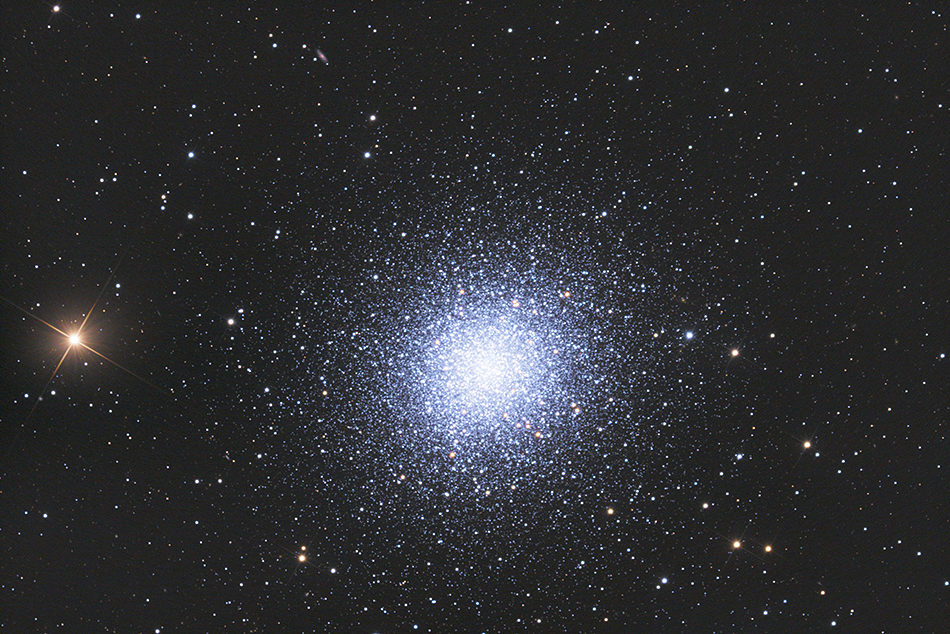

| Object name: | Constellation: | Coordinates: | Apparent size: | Visual brightness: |
|---|---|---|---|---|
| Messier 13 (= NGC 6205) |
Hercules | 16h42m / +36°28' | 20' | 5.8 mag |
The globular cluster Messier 13 (NGC 6205, "Great Globular Cluster in Hercules", "Hercules Globular Cluster") in the constellation Hercules. Discovered by the English astronomer Edmond Halley in 1714, this cluster contains several hundred thousand stars and is 25,100 light-years from Earth. The cluster which measures 150 light-years in diameter can be seen in a small telescope. The 1974 Arecibo message, which contained encoded information about the human race, the Earth's position and other information, was beamed from the Arecibo radio telescope towards Messier 13 as an experiment in contacting potential extraterrestrial civilizations in the cluster. Since the cluster will move through space during the flight time of the radio signals, it's unclear whether the signals can be received by civilizations of the cluster at all (source: Wikipedia).
Seventy 1-minute exposures (70 minutes total exposure) at gain 100, taken on June 10 / 11, 2021, were added for this shot with Astro Pixel Processor (APP) software and the final image processing was done in Photoshop. Darks, flats, and darkflats were used.
Equipment: Cooled ASI 2600MC Pro camera, TeleVue Paracorr Type II coma corrector, 16" f/4.5 "Ninja" dobsonian telescope riding on a dual-axis Tom Osypowski equatorial platform, Lacerta MGEN autoguider, Lacerta off axis system (field of view comparison: image of the moon with the same equipment).
